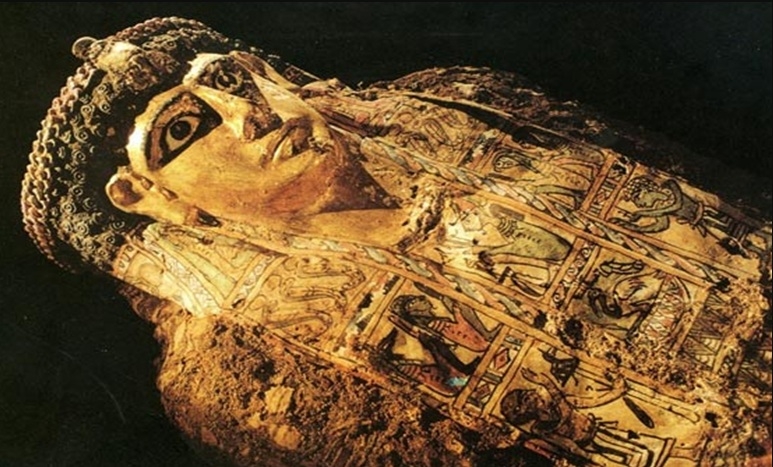The Valley of the Mummies is a very recent find, but extraordinary in that it has been called possibly the largest mummy necropolis in Egypt. It all began in 1996 when an antiquities guard was riding his donkey in the Bahariya Oasis. The donkey's leg stumbled in a hole, revealing an opening in the ground into the tomb complex. Soon, teams of archaeologists, architects, restorators, conservators and engineers began what would be the largest expedition ever done in Egypt that continues to this day.
In 1996, an astonishing discovery was made in Egypt by Dr. Zahi Hawass and his team. Archaeologists uncovered a two-square-mile necropolis that contained a number of important tombs. Upon the first excavation, four of the tombs were found containing 105 well-preserved mummies, many of them containing elaborate golden masks; hence the cemetery came to be known as ‘Valley of the Golden Mummies’. The initial discovery was believed to be just the tip of the iceberg, however, as it is thought that there may be up to 10,000 mummies lying within the cemetery.
Dr. Hawass’ team uncovered 105 mummies within four tombs dating back to 332 BC. Each of those 105 mummies fell within one of four categories:
Mummies which are gilded, covered with a very thin layer of gold, mummies covered with cartonnage and scenes depicted, such as gods and goddesses, for example, Anubis of the embalmment, Osiris, Isis, and the four children of Horus as well as the god Toth. All these gods are connected with the judgment. The third type are mummies inside anthropoid coffins (these are coffins made of pottery with human faces). The last style is mummies wrapped with linen.
The Tombs consist of an entrance, delivery room and two burial chambers, lots of artifacts were found near the mummies, such as statues of mourning ladies made of pottery. Other artifacts, such as different types of pottery in the shapes of God Bes, the dwarf god of pleasure and fun. Also, other artifacts including bracelets, earrings and coins were found. The study of these coins reveals that this find is dated from the Greek Period to the Roman Period.

